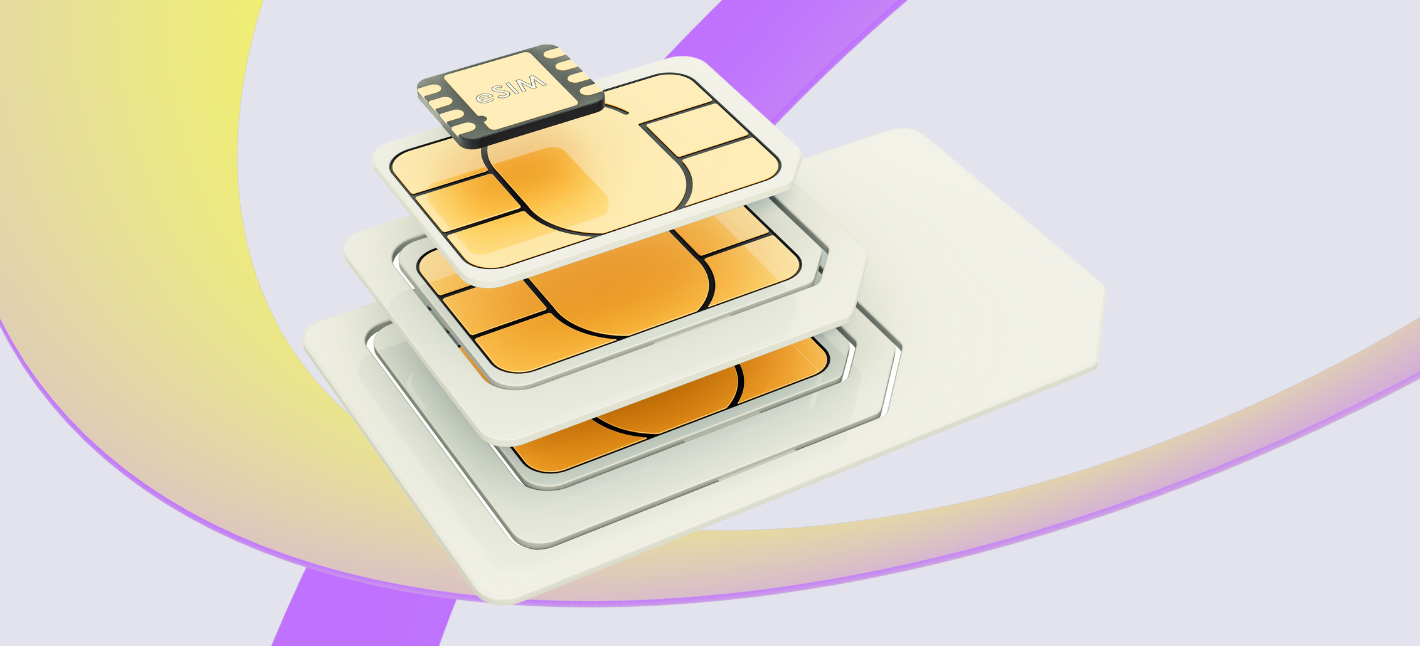Cloud Connectivity In IoT Managed Platform for IoT Connectivity
IoT Connectivity Policy Survey on IoT Connectivity Technologies and Applications

The rapid evolution of the Internet of Things (IoT) has led to an increased concentrate on connectivity solutions for gadgets, permitting them to communicate and relay data effectively. As businesses and industries incorporate IoT options to improve effectivity and increase processes, understanding the differences between cellular and non-cellular IoT connectivity turns into essential.
Cellular connectivity makes use of existing cellular networks to attach devices, permitting for knowledge transmission over extensive geographical areas. This technology is well-established, supported by a long time of infrastructure development, and has the advantage of offering customers sturdy coverage and reliable communication. Devices outfitted with cellular expertise can faucet into the 2G, 3G, 4G, and the rising 5G networks, providing high-speed knowledge switch capabilities.
Non-cellular IoT connectivity supplies alternative communication strategies that don't depend on mobile networks. These options can include Wi-Fi, Bluetooth, Zigbee, LoRaWAN, and different specialised protocols designed for specific use cases. This category typically targets short-range functions, such as house automation or localized sensor networks, the place broad cell protection is most likely not essential.
IoT Connectivity Pricing Guide to Cellular IoT Options
The choice between cellular and non-cellular connectivity primarily hinges on the specific requirements of the application. For example, cellular networks are sometimes most popular for belongings that are mobile, roaming between different geographic areas, or require real-time data communication. This makes cellular connectivity ideal for functions corresponding to vehicle monitoring and smart transportation techniques, the place units regularly transition between totally different network zones.
In contrast, non-cellular connectivity tends to be favored in environments where gadgets exist stationary and communication doesn't require in depth coverage. For instance, inside a wise constructing, a quantity of IoT sensors can talk over Wi-Fi or Zigbee, efficiently sending information on energy utilization, occupancy, or environmental situations without having the expansive reach of cellular networks.
Cellular Connectivity Providers For IoT Basics of Global IoT Connectivity
Another pivotal consideration is cost. Cellular connectivity can entail greater costs for information plans, particularly for high-data-use applications. Depending on the volume of information transmitted, organizations should consider the long-term prices coherently. Conversely, non-cellular solutions usually involve decrease operating bills since many units can talk over personal networks without incurring month-to-month fees.
In phrases of power consumption, non-cellular technologies frequently stand out. Many low-power protocols, similar to LoRaWAN, have been specifically designed to attenuate energy usage, extending the battery lifetime of connected units significantly. This is important for applications corresponding to environmental monitoring or agricultural sensors, where maintenance should be infrequent.
IoT Connectivity Definition Understanding the Internet of Things
Security is one other important factor influencing the selection of connectivity kind. Cellular networks benefit from established safety protocols and encryption strategies, which can scale back vulnerability to assaults. Non-cellular solutions, whereas providing flexibility and decrease costs, can present extra diversified security challenges, requiring cautious implementation of encryption and security measures to protect consumer knowledge and gadget integrity.
Latency is a critical side impacting performance in IoT purposes. Cellular networks, significantly with the advancements seen in 5G, provide low-latency communication ideal for real-time functions. This is paramount for sectors similar to telemedicine or autonomous autos, the place delays in data transmission may end up in severe penalties. Non-cellular technologies can introduce larger latency, making them much less appropriate for tasks demanding real-time interaction.

The scalability of IoT systems additionally displays the differences between the 2 kinds of connectivity. Cellular networks already accommodate millions of devices, because they're constructed with a broad consumer base in thoughts. This makes them an attractive option for large-scale deployments requiring widespread coverage. Non-cellular options, notably those working on local networks, can face hurdles concerning scalability, particularly when numerous devices should be coordinated.
Environmental situations and bodily obstacles can closely affect the effectiveness of connectivity choices. Cellular signals can penetrate buildings and transmit over longer distances, making them versatile in varied settings. Conversely, non-cellular technologies, whereas potentially restricted in vary, can make the most of mesh networking capabilities, allowing devices to relay info by way of each other, extending the efficient communication area - Aws IoT Connectivity.
IoT Sim Connectivity IoT Connectivity as the Foundation
In sensible terms, many modern IoT strategies undertake a hybrid approach, using each cellular and non-cellular connectivity relying on particular requirements. Such a method allows customers to profit from the strengths of both from this source techniques while mitigating their weaknesses. For instance, a wise city could deploy cellular sensors for traffic administration while utilizing Wi-Fi for local environmental monitoring stations.
The way ahead for IoT connectivity rests in improved technologies that can continue to bridge the gap between cellular and non-cellular choices. Advancements in edge computing might allow units to course of knowledge regionally, decreasing the necessity for fixed connectivity. Increased collaboration between different varieties of networks, such as integrating cellular backhaul with local space networking, can lead to innovative options for numerous industries.

Ultimately, deciding between cellular and non-cellular IoT connectivity necessitates a complete analysis of the specific use case. Factors like coverage, price, power consumption, latency, and safety should all be weighed to pick an applicable connectivity solution.
The evolution of IoT signifies an exciting future, where the mixing of cellular and non-cellular technologies can create a extra linked world. As industries proceed to innovate whereas integrating IoT techniques, the versatility and adaptableness supplied by a mix of those connectivity options will pave the way in which for extra efficient and responsive options.
Mobile Data Connectivity For IoT Connection Types and IoT Devices Overview
Through understanding the distinctions between cellular and non-cellular IoT connectivity, stakeholders can strategically deploy solutions that meet their specific wants, markedly improving the efficacy of IoT functions in real-world contexts.
- Cellular IoT connectivity makes use of established mobile networks for seamless information transmission, offering widespread coverage and reliability.
- Non-cellular IoT, corresponding to LoRaWAN or Sigfox, usually operates on low-power radio frequencies, making it best for rural or hard-to-reach areas where cellular services might be restricted.
- Cellular networks support excessive bandwidth purposes, enabling real-time data switch, which is crucial for sectors like telemedicine or autonomous autos.
- Non-cellular options sometimes eat much less power, allowing gadgets to have longer battery life, which is advantageous in environments the place frequent maintenance is impractical.
- Cellular IoT devices may require a subscription-based information plan, resulting in larger ongoing prices compared to non-cellular techniques that might be cheaper to operate.
- Non-cellular IoT technologies typically present larger scalability for large-scale deployments, as they will connect hundreds of units without overwhelming a single network node.
- Cellular connections have a tendency to supply more robust safety protocols, critical in industries requiring stringent information protection measures, similar to finance or healthcare.
- The latency in non-cellular networks could additionally be larger, making them much less appropriate for functions where well timed data processing is essential, corresponding to industrial automation.
- Geographic availability can limit non-cellular IoT deployment in city areas, whereas cellular infrastructure is usually extra developed and accessible.
- Non-cellular options may introduce complexities in gadget integration and management, whereas cellular technologies profit from a more homogenized ecosystem supported by main telecom providers.undefinedWhat is the primary distinction between cellular and non-cellular IoT connectivity?
Cellular IoT connectivity uses cell networks (like 4G and 5G) for communication, whereas non-cellular options depend on various methods similar to Wi-Fi, LoRaWAN, or satellite. The alternative affects protection, power consumption, and information transmission capabilities.
IoT Connectivity Platform Overview of IoT Connectivity
How does coverage differ between cellular and non-cellular IoT options?
Cellular IoT has intensive protection, particularly in city areas, benefiting from established cell networks. Non-cellular choices could have restricted range depending on the technology; for example, Wi-Fi coverage is confined to the range of a router, whereas satellite tv for pc can provide international reach.
What are the costs related to cellular versus non-cellular IoT connectivity?
IoT Connectivity Market Managing IoT Connectivity Effectively
Cellular IoT usually incurs month-to-month knowledge fees tied to a mobile plan. Non-cellular solutions might have decrease ongoing prices however could require more vital upfront investments in hardware or infrastructure, affecting the helpful resources general finances depending on the appliance.
Which possibility provides better energy effectivity for IoT devices?
Non-cellular IoT connections, such as LoRaWAN, are generally extra power-efficient, permitting devices to operate for extended periods on battery (IoT Connectivity Comparison). Cellular IoT might eat more energy, significantly throughout high information transmissions, however newer technologies like NB-IoT purpose to improve effectivity.
What kinds of purposes are best suited to each connectivity type?
Nb-IoT Connectivity Tips for Choosing IoT Connectivity Solutions
Cellular IoT is good for purposes requiring mobility or extensive geographic protection, like fleet tracking. Non-cellular solutions excel in eventualities where low information transmission and low power consumption are priorities, such as smart agriculture or remote sensors.
How secure are cellular and non-cellular IoT connections?
Cellular networks typically have built-in safety measures, including encryption and authentication, benefiting from regulatory oversight. Non-cellular connections can range in security primarily based on the precise technology used, necessitating careful consideration for crucial purposes.
IoT Connectivity Management Platform Future of IoT Technology Connectivity
What are the latency variations between cellular and non-cellular IoT connectivity?
Cellular IoT sometimes presents decrease latency, making it suitable for real-time functions. Non-cellular options may expertise higher latency, particularly in networks that depend on longer-distance transmissions or less optimized protocols.
Can I change from cellular to non-cellular connections in an current IoT application?
What Is IoT Connectivity? Tactics for Overcoming IoT Connectivity Challenges
Switching is possible but requires careful assessment of the applying's wants. Strategies should be developed to address differences in coverage, power, knowledge charges, and total structure to make sure the IoT resolution stays efficient - Resilient IoT Connectivity.
What elements should I contemplate when choosing between cellular and non-cellular IoT connectivity?

Consider coverage space, information requirements, power constraints, gadget mobility, security wants, and finances. Each application's unique necessities will assist decide the most suitable connectivity resolution for optimal performance.